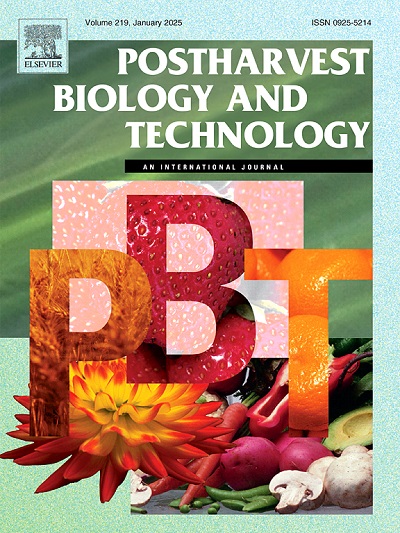Jasmonate activates PuMYC2 and decreases histone acetylation levels to inhibit the ester aroma catabolism in cold-stored Nanguo pears fruit
IF 6.4
1区 农林科学
Q1 AGRONOMY
引用次数: 0
Abstract
Nanguo pear (Pyrus ussuriensis) is characterized by an intense fruit aroma, which is primarily attributed to volatile ester compounds. It has a short storage period at room temperature, and cold storage is often used in production to extend the storage period of the fruit. However, it leads to a significant decline in volatile ester compounds, which diminishes the aroma and reduces the commercial appeal of the fruit. In this study, we found that methyl jasmonate (MeJA) treatment significantly increased ester aroma synthesis and upregulated the expression of PuMYC2, which codes for a transcription factor involved in the JA signaling pathway in cold-stored Nanguo pear furits. Additionally, we observed a decrease in the expression of PuCXE15, a key gene responsible for ester aroma catabolism in MeJA+Cold fruits compared with cold fruits. We further found that PuMYC2 directly binds to the promoter of PuCXE15 and suppresses its transcriptional activity. Furthermore, MeJA treatment reduced histone acetylation levels of PuCXE15 promoter that inhibited PuCXE15 transcription and increased ester volatile compound levels in cold-stored Nanguo pears. Altogether, this study revealed that MeJA inhibits aroma degradation in cold-stored Nanguo pears through transcription regulation and epigenetic mechanisms, thereby provides a foundational understanding for improvement of fruit aroma quality.
求助全文
约1分钟内获得全文
求助全文
来源期刊

Postharvest Biology and Technology
农林科学-农艺学
CiteScore
12.00
自引率
11.40%
发文量
309
审稿时长
38 days
期刊介绍:
The journal is devoted exclusively to the publication of original papers, review articles and frontiers articles on biological and technological postharvest research. This includes the areas of postharvest storage, treatments and underpinning mechanisms, quality evaluation, packaging, handling and distribution of fresh horticultural crops including fruit, vegetables, flowers and nuts, but excluding grains, seeds and forages.
Papers reporting novel insights from fundamental and interdisciplinary research will be particularly encouraged. These disciplines include systems biology, bioinformatics, entomology, plant physiology, plant pathology, (bio)chemistry, engineering, modelling, and technologies for nondestructive testing.
Manuscripts on fresh food crops that will be further processed after postharvest storage, or on food processes beyond refrigeration, packaging and minimal processing will not be considered.
 求助内容:
求助内容: 应助结果提醒方式:
应助结果提醒方式:


